 So you still think the hottest street-legal Ferrari of them all is the Enzo? Listen up; we have an update. There’s a new champ in Maranello—it’s not as outrageous as the Enzo, but more powerful, more sophisticated, more agile, and even faster. Ferrari calls it “the most extreme sports car” it has ever produced. At a company where fabulous is the starting point for pretty much every new project, that’s saying something.
So you still think the hottest street-legal Ferrari of them all is the Enzo? Listen up; we have an update. There’s a new champ in Maranello—it’s not as outrageous as the Enzo, but more powerful, more sophisticated, more agile, and even faster. Ferrari calls it “the most extreme sports car” it has ever produced. At a company where fabulous is the starting point for pretty much every new project, that’s saying something.Ferrari’s challenge (besides, you know, actually engineering the car) was in choosing a name for the beast, which is based on the 599GTB Fiorano. There isn’t much to set the new car apart visually from the GTB, just additional aero elements at the front, aggressive rear air diffusers, and other various airflow management touches that add up to double the high-speed downforce of the “regular” 599.
The corporate brain trust looked down the corridor of Ferrari immortals, and they came across the 1962–64 GTO, and resurrecting the name just made sense. (Less influence came from the mid-engined, twin-turbo V-8 GTO of 1984, which was based on the 308.) And the 599GTO was born.
GTO Then and Now
Although much has changed since 1962, there are some fundamental similarities between the legendary original and this revival. Both cars are front-engine, rear-drive designs, and both have excellent weight distribution, with essentially all of the powerplant’s mass riding behind the front axle’s centerline. Both sport a small aero upkick on the rear decklid, dubbed a “nolder.” Both cars are propelled by aluminum V-12 engines, and both generate compelling noises as the revs climb toward redline. But of course there’s a little more muscle behind the crescendos coming from the 599GTO’s quadruple tailpipes.
Fed by six two-throat Weber carburetors—remember carburetors?—the 3.0-liter SOHC V-12 that powered the original GTO was rated for 300 hp at 7400 rpm and 250 lb-ft of torque. Feeding power via a five-speed manual gearbox to a limited-slip live rear axle, it was capable of a 5.8-second run to 60 mph, and a top speed of 144 mph.
This was very hot stuff in the early ’60s, and isn’t exactly slow even today. But it’s tame compared to what happens when you set the new car’s manettino (the steering-wheel-mounted dial that controls a number of vehicle functions such as traction and stability control levels and shift response) to Race (the middle position of five), and summon all the horses lurking under the 599GTO’s hood.
There are 671 horses on hand in this version of the 599’s V-12, up from 612 in the 599GTB, and they come quickly when called. As the engine shrieks its way to its 8400-rpm peak, you’re squashed into the racing-style bucket seat, with each upshift through the six-speed gearbox giving an extra little shove.
Split-Second Defined
To understate things, those upshifts don’t take long. With a manettino setting of Race or higher, the single-clutch automated manual takes just 60 milliseconds to go from one gear to the next, according to Ferrari. That’s about twice as fast as the gearbox response in the GTB Fiorano, and beyond the hand speed of any human operating a traditional manual.
 The oversized shift paddles, which are fixed to the steering column rather than rotating with the wheel, make actuating cog swaps a pure joy, and you find yourself wishing there were a few more gears. At the top end of sixth, flat out, the GTO will be traveling at just over 208 mph, so maybe there are enough gears after all.
The oversized shift paddles, which are fixed to the steering column rather than rotating with the wheel, make actuating cog swaps a pure joy, and you find yourself wishing there were a few more gears. At the top end of sixth, flat out, the GTO will be traveling at just over 208 mph, so maybe there are enough gears after all.Ferrari forecasts a 0-to-62-mph time of 3.35 seconds, quicker than the Enzo. After considering power, mass, phase of the moon, and position of the planets, our tech guys forecast something a little quicker—3.1 seconds—since the GTB Fiorano we tested in September 2008 made the sprint in 3.3.
Power Mining
The GTO’s power increase over the GTB was achieved largely by improved intake and exhaust flow, the latter carefully tuned to emit sounds that are both louder and distinctly more nourishing to the tifosi spirit. The howl of the GTO at full chat: Fantastico!
Other elements of the GTO V-12 include a new 180-degree (flat) crankshaft design with throws designed to twirl more freely, extensive friction-reducing measures that Ferrari says make it 12 percent more efficient than the GTB’s V-12, and improved digital control of the ignition system, which monitors and adjusts every combustion event. Surprisingly, the profiles of the cam lobes are unchanged.
This may sound like a lot of effort for a car whose production—which is beginning as we speak—will be limited to just 599 copies but much of the work had already been done for the more radical 599XX, a car with no stree-legal pretensions whatsoever. In XX trim, the Ferrari engineers have managed to extract 720 hp from the V-12; elements of that transformation compatible with contemporary emissions regulations were used on the GTO project.
The Benign Rocket
Anyway, fast and powerful are traits you’d expect of a car wearing the storied GTO badge. What you might not expect is just how eagerly—and forgivingly—this latest GTO applies that power and speed to a given stretch of straights and curves. The fundamental mechanical elements of the dynamic upgrade versus the standard 599GTB Fiorano and the more aggressive Handling Gran Turismo Evoluzione (HGTE) version are stiffer spring rates and a heftier rear anti-roll bar. There’s also more grip; Ferrari estimates about 1.25 g, thanks to bigger contact patches from 285/30 front and 315/35 rear Michelin rubber made from a new compound; these Pilot Super Sports are a little stickier than the very sticky Pilot Sport Cups.
The combination of more grip, standard (and huge) carbon-ceramic rotors, and Brembo’s new ceramic pads yields superb braking power, with ABS standing by should the driver overpower the tires. During our visit to Italy’s fast 3.1-mile Mugello racetrack, a couple of test drivers managed to jump on the brake pedal hard enough, and at a high enough speed, to reach the ABS threshold. This author was never in danger of having this occur, though I did feel my eyeballs trying to dislodge themselves during a couple of late-braking episodes.
Manettino Magic
As with the 599GTB, a set of auto-adjusting magnetorheological shock absorbers provide wonderfully precise damping, as well as astonishingly comfortable ride quality on public roads. But the element that gives this supercar an exceptional degree of user-friendliness is how well the GTO takes care of its driver at high speeds via the five settings offered by the manettino (it means “little hand”), that small dial mounted on the lower right corner of the steering-wheel center.
As we said, the dial governs traction control, stability control, and shift responses. Its lowest setting is for inclement conditions. Next is Sport, which raises the stability control threshold considerably. In Race, the threshold goes higher still, and shift time is reduced to that magical 60 milliseconds. The next step cancels traction control, and the final position shuts down all the electronic assistance.
This last step is for those who are, yes, brave and accomplished, but also who hold title to the car. I certainly didn’t qualify on the last part, and so confined myself to moving the manettino to the fourth click on my final set of laps. At that level, the system allows a lot more sliding around before it kicks in, but it ultimately steps in and restores some sense of order.
The GTO is a well-balanced package, almost as willing to change direction as the mid-engined F430 or 430 Scuderia. There’s a hint of very mild understeer, easily corrected with the throttle, and if the steering isn’t quite as tactile as that of some sports cars, it’s as accurate as a surgical tool. What all this adds up to is a sporting machine of a very high order, one that recently wrested Ferrari’s production-car lap record at its 1.9-mile Fiorano test track from the Enzo, turning in a time of 1:24.0 versus 1:25.0.
The basic get-in for a 599GTB Fiorano is almost $317,000. Adding the HGTE package costs just over $30,000. But that would still leave you a little over 100 grand in your pockets against the 599GTO, at an estimated $450,000. Does that seem high? The Enzo was some $200,000 north of that, and the 29 copies of the 599XX went for $1.5 million each.
What the 599 prospective GTO owners can look forward to is supercar performance that matches the software wizardry of a car like the Nissan GT-R, but without imposing robotic and passionless precision. The GTO will take care of its driver to the extent the driver finds comfortable, but its soul is omnipresent.
However, if your name isn’t already on the list of future owners, these concerns don’t concern you: All 599 examples are already spoken for. If this seems like favoritism, consider that no single Ferrari begins its gestation without an owner’s name on the build sheet, and that the company began inviting carefully selected GTO prospects to visit its headquarters in early January. So, yeah, it’s pretty much favoritism.



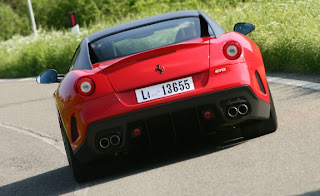


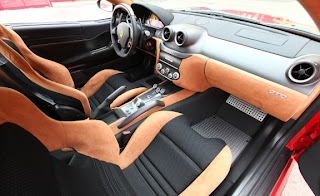



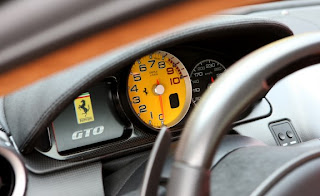
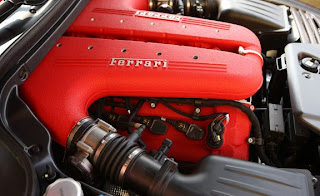

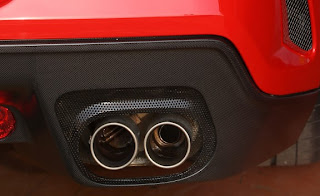
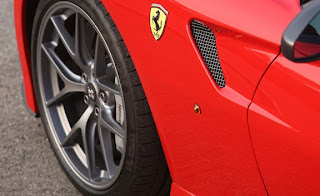
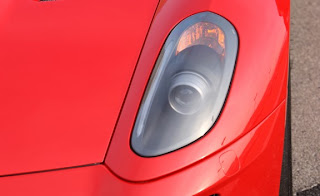
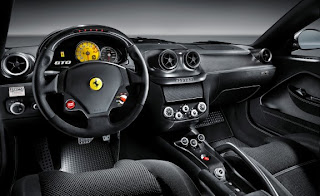


No comments:
Post a Comment